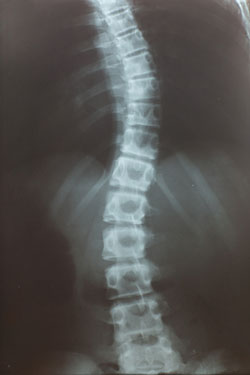
Scoliosis generally develops during childhood, but it also can occur in adults. Adult refers patients who have completed their growth (i.e., are over the age of 18 or have gone through puberty). Adult scoliosis is distinctive from childhood scoliosis in terms of the causes. In addition, the goals of treatment differ in skeletally mature patients.
Scoliosis is a musculoskeletal disorder that adversely affects the shape of the spine (backbone). The spine is composed of bones called vertebrae. Normally, when viewed from behind, these bones (vertebrae) run down the back in a straight line. There are normal (front-to-back) curves of the spine; however, scoliosis is a side-to-side curvature of the spine. Therefore, a scoliotic spine (when viewed from behind) will not be straight and may instead look like the letter "C" or "S", due to the side-to-side (right-to-left) curvature. Adult scoliosis is relatively common compared to other musculoskeletal diseases.
An abnormal curvature of the adult spine can occur at any age and from a variety of causes. Adult scoliosis can be the result of:
Adult scoliosis also can be divided into a number of different classifications:
Adolescents with scoliosis rarely have pain; however, adult patients with scoliosis often have with a variety of symptoms. These symptoms are typically due to degenerative changes in the adult spine. Adults can experience a gradual loss of function and a decrease in the ability to accomplish daily activities.
Potential symptoms and signs of adult scoliosis may include: